

Outlier Joe
gamer level 4
1753 xp
1753 xp
followers
18
18
Use my invite URL to register (this will give me kudos)
https://boardgaming.com/register/?invited_by=outlierjoe
profile badges




recent achievements

I Got What I Wanted
Add a game to your Owned list that was previously in your Wish list.
Add a game to your Owned list that was previously in your Wish list.

Novice Reviewer
Review 5 games and receive a total of 140 positive review ratings.
Review 5 games and receive a total of 140 positive review ratings.

Comment on your favorite LGS
Add a comment on your favorite local game store page to tell people what you like about your LGS.
Add a comment on your favorite local game store page to tell people what you like about your LGS.

Reporter Intern
Earn Reporter XP to level up by completing Reporter Quests!
Earn Reporter XP to level up by completing Reporter Quests!
Player Stats
Critic (lvl 2)
555 xp
555 xp
Explorer (lvl 2)
647 xp
647 xp
Professor (lvl 1)
128 xp
128 xp
Reporter (lvl 1)
114 xp
114 xp
About Me
When I approach games, I tend to approach them as being a part of the intended audience. It's not always an easy task as I am quite settled on the types of games I enjoy.
When I approach a game to review, I know I need to have a good feel for the game. I need to know I've played it correctly a few times. One play rarely is ever enough. I also want to be very critical of the game, because every game can be improved.
My scores of a game hardly reflects my review of a game. I don't view a "10" score a the perfect (or grail) game, but a game I'd be more than likely to play any time, or even make time to play it.
A good way to look at what I like is that I take a casual approach to strategy games. Some of my favorite games include Bora Bora, Mage Knight, Terra Mystica & Dungeon Lords.





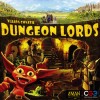


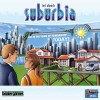
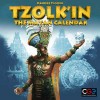


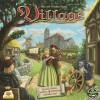





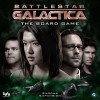
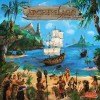
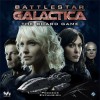







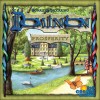




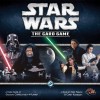
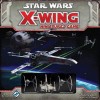







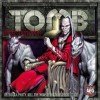

Kingsburg
Quick Summary
In Kingsburg, the players are Lords in a kingdom, tasked with building prosperous lands that are self sustaining. This is accomplished by sending out workers (dice) to consult the King’s court of advisors where they’ll receive resources, aid and information which can be used to construct buildings. Those buildings will be used for prosperity and training as well as defense against winter invading monsters. Whoever, after 5 years, has pleased the king the most, wins.
Primary Mechanics
– Dice Rolling/Placement – Players simultaneously roll their color dice. These dice determine where you may place your workers, and in which order players will go, starting with the player who rolled the lowest. When placing the dice, you can place them in any combination on any advisor that does not already have another player on that advisor. Anyone familiar with Worker Placement will recognize this part of the mechanic. You’ll then continue in player order until everyone that can, has placed all of their dice. What sets this apart from most Worker Placement games is you do not immediately get the resources or advantage of that spot when you place your dice there. Instead, you go, from lowest to highest, grabbing resources. This allows you to set up some interesting combinations that can gain you an advantage to some of the lowest rolled numbers, where you’d maybe just normally just get a wood, you’ll now be able to trade that wood for a stone AND gold at the trader.
– Buildings – You’ll need to collect resources so you can exchange them to build buildings which grant you a special ability or benefit as well as usually giving you some victory points. The abilities can include ways to manipulate your dice, give you extra dice, better ways to manage your resources, or give you defenses against the end-of-year invading monsters. This is where the majority of the game’s strategy comes through, as you try and figure out which combination of buildings you want.
– Invading Enemies – The game takes place over 5 years, each consisting of 4 seasons. During the spring, summer and autumn seasons, you are allowed to build. But during winter, everyone must face an unknown foe. Each year. the difficulty of these enemies increases more and more, and players will gain rewards for defeating them, but risk losing resources, points or even buildings if they fail. But before facing the monsters, a player will roll a die which shows how many reinforcements the king is sending to all of the territories. This die, in combination with your building’s defense values and any other special benefit you gain from the advisors, determines the success or fail. Sometimes this will feel a bit like a “Push Your Luck” type mechanic.
Balance & Difficulty
This is a pretty straightforward game. I’ve taught it to several players who are new to board games. And it provides enough fun as a gateway game for people new to board games, but enough to think about for experienced gamers too. It isn’t too thinky, but it can be bogged down a little bit by going over the choices you have on advisors.
Since the higher rolls tend to yield better results, there can be a lot of perceived advantages to those that are lucky in their rolls, but players who win are usually those that can best use their resources, not those that gain the most. So there may be some imbalance with the luck of the rolls, players who lose will more often lose because of their own mistakes, and not because they didn’t get a break. Still, not getting good rolls can be very frustrating.
Theme
The basic premise of the theme is very vanilla. It’s a medieval fantasy setting. Not a lot of thematic flavor really comes out on this one. How the theme blends with the game mechanically is sufficient. I assume the dice represent a worker’s persuasive talent, which allows them to seek aid from those higher on the king’s court, even up to the Queen and King themselves. There are some +2 tokens, which have no thematic explanation, but I’ve always perceived them as being a sort of “favor” granted by the court, which you can always cash in later. I can’t say the mechanics really flesh out the theme, but they ultimately don’t detract from it either. I wouldn’t present this to any player as a “Thematic experience”. In fact, it is probably one of Fantasy Flight’s most euro-style games that they continue to publish.
Components
– Main Board – The main board is well laid out. Everything is very clear, everything is language independent. The only thing is that there are some instances where players “tie” for a special benefit, and the board doesn’t really clarify what you should do. So you’ll have to consult the manual if you can’t remember. But the graphic design is clear enough that it doesn’t’ really barricade new players.
– Player Board – These are pretty straightforward, but they do have a lot of written language, as every building is unique from each other, you’ll have to read through them a few times to really grasp a good strategy and combination. You’ll be placing tokens on them, to keep track of what you’ve built, so you’ll want to keep them in a spot that you won’t bump them easily
– Dice – The Dice are incredibly average. They are indented, painted dice with rounded corners. So they aren’t made for rolling across the table like casino dice, but just shaking in your hand and placing them down.
– Cards – There aren’t many cards in the game, but they are included. They have a good quality to them. They have a black edged border and you’ll only shuffle them a little bit when setting up the game, so they won’t scuff too much. But if they do scuff and start showing wear, it can be a huge advantage to players who recognize the markings. If this happens, you’ll want to sleeve the cards with an opaque back.
– Chits – There aren’t too many types of chits. There are a handful for each player and some +2 tokens. All are great quality though. Fantasy Flight has a bit of a reputation for their punch board components.
– Wooden Pieces – There are some uninspiring but incredibly practical wooden cubes, a handful of wooden discs, and a little wood piece that is suppose to represent the King’s Envoy. Not too detailed, but sufficient. No real complaints about the quality or application of them.
– Insert – The insert is a molded plastic extrusion. It’s functional, but it doesn’t store the components in any organized manner. It’s a bit oversized for what it actually holds. Overall, I like that it is plastic, but it’s still just a very generic insert.
– Rulebook – Fantasy Flight has a reputation and knack for unorganized and convoluted rulebooks that are very hard to reference. A lot of their games are quite complex monsters, but even some of their other, smaller or gateway games have these problems too. Kingsburg is the exception. It’s a very concise rulebook that is very easy to learn and reference.
Art
The art has a good style but it’s hard to really feel it is original, mostly setback because of the theme. Without really taking a risky stylistic approach to the art, there’s just not a lot left to do to make a high fantasy theme feel fresh and unique.
Replay Value
I’d like to say that the game presents a lot of random elements that really brings a lot of replay ability, but in my experiences, players seem to really settle into a set strategy. After a while, the game always seems to feel very similar. I’ve seen a lot of Inn>Market>Farm>Merchant’s Guild strategy so that players get flexibility with how the place their dice. Until I really started experimenting outside of this, I was getting quite bored with Kingsburg, but there are only so many build orders you can have in Kingsburg. I would love to say there is a lot of replayability, but I find so many games just end up going down a similar path. There is replayability, but it takes a player that is willing to really try something different, sometimes at the risk of being competitive.
Who May Be Interested in it?
This really should have a pretty broad appeal for gamers. If you’re an avid gamer, you should consider having this in your collection for those that aren’t is in to games as you are. It provides enough game to be enjoyable with an occasional play, it’s light enough for new or casual gamers or family members to take some time and play. The game is very much a light-to-medium Euro game, but it isn’t soulless.
Who Should Avoid it?
There will be a subset of gamers who will feel like they’ve moved on beyond what games like Kingsburg provide. Those that are looking for a very in-depth and strategic game should keep looking past Kingsburg. Those that are also looking for a wild theme park ride or thematic experience should also consider passing on this. It doesn’t provide a rich, thematic experience. The game doesn’t have a lot of direct interaction. You’re mostly just trying to get in the way of other players and cause them an inconvenience.
Final Conclusion
Kingsburg is a decent game. It’s a game that will stay in my collection. But it won’t get played frequently. The game is a good, light introduction to some more complex mechanical concepts used in other games. It has a good place role for dice and it has enough of a challenge to keep me engage for an occasional game.
About my reviews.
The purpose isn’t to teach you how to play the game. This review isn’t to reinforce any type of confirmation bias. I try to judge the game as it is designed. (No house rules, variants and expansions are reviewed separately). While I may apply a numeric rating, it would be my desire you ignore that number while reading my reviews. What I want to do is highlight notable aspects of the game and critique the game to help you decide if you think it may be something that interests you. I don’t believe it is good for people to make uninformed purchases. Thanks for your time.